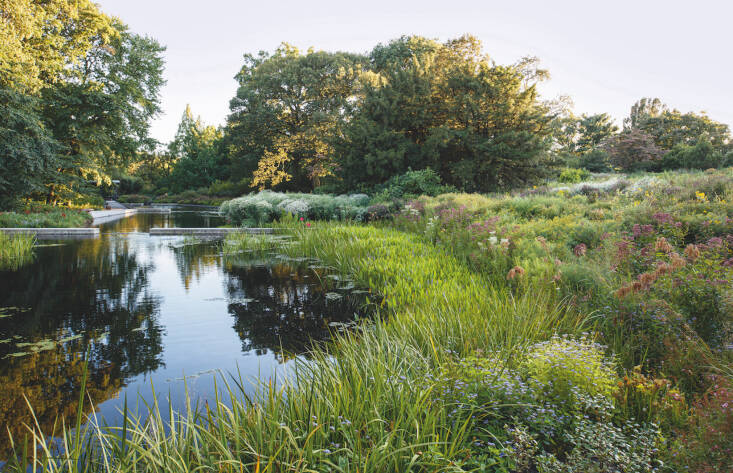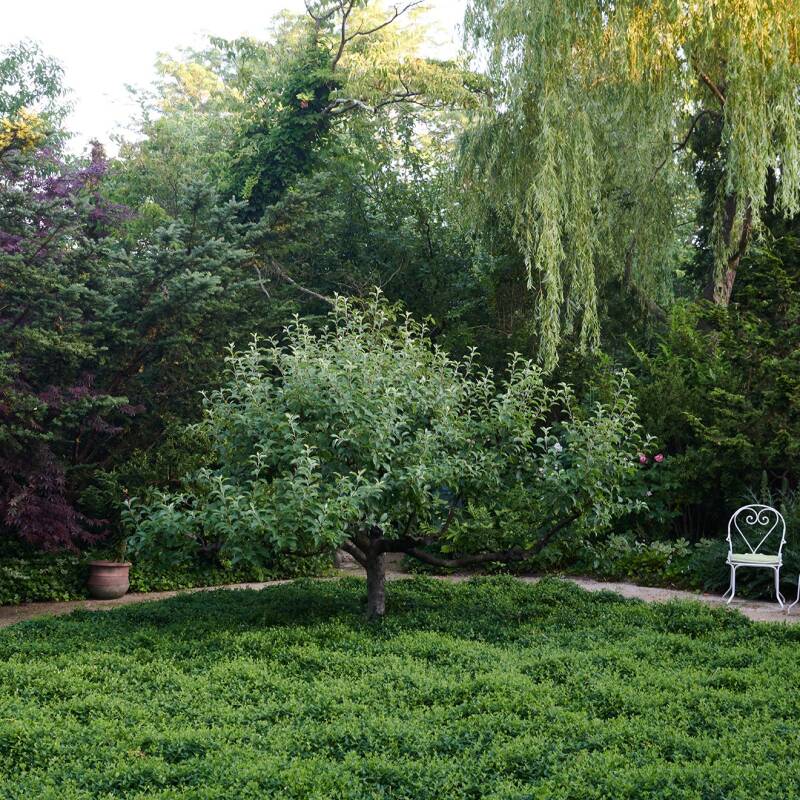In gardening, wild may be the word of the moment but it is a loaded term—because what is wild? Any element of interference, management, or design suggests that a garden isn’t wild at all, but a facsimile of nature, an echo of what a left-to-its-own devices landscape might look like.
It’s a theme that is currently dominating design, having been turbo-charged by the need for gardens that are sustainable and planet-friendly—and work with nature. And now garden designer and writer, Noel Kingsbury is breaking down all of these ideas in a new book, Wild: The Naturalistic Garden, which draws together private and public gardens around the globe with beautiful photography by Claire Takacs. The book broadly aims to order these gardens from the most managed and orchestrated through to something looser and, well, wilder. But it becomes clear that this is a sticky and blurred area to define.
Photography courtesy of Claire Takacs, from Wild: The Naturalistic Garden.

Few have been as instrumental in the rise of naturalistic landscapes as Piet Oudolf and he bookends this volume—beginning with Oudolf Field (his stylized meadow of matrix planting at the Hauser & Wirth Gallery in Somerset, England) and ending with his own garden at Hummelo, in the Netherlands. The Dutch landscaper has spearheaded the movement with his focus on plants for their structure and texture, and the way in which he uses key shapes, such as balls, spires, umbels, plumes, and curtains, for visual interest in his designs. (For more on his work, see 10 Garden Ideas to Steal from Superstar Dutch Designer Piet Oudolf.)

Gardening traditionally meant quite extreme control—manicured lawns, neat borders—a pretty playground with many functions. Recently with the rise in prairie planting and wildflower meadows, that aesthetic has been turned on its head. But there were early practitioners, most famously the writer William Robinson, a prolific flag-waver for naturalistic plantings. Then came more ecological gardening a century later with Beth Chatto’s “right plant, right place” mantra of choosing plants based on their natural suitability for a site. These ideas are all about practicality and sustainability.

One of Wild’s key strengths is the breadth of climates it covers. There are plenty of landscapes created under challenging conditions—hot, dry, exposed—such as Miguel Urquijo and Renate Kastner’s Water Mill garden at high altitude in the Sierra de Guadarrama, Spain, which uses native heathers and yew clipped into neat, sculptural mounds to create an undulating backdrop to swathes of bearded iris. Not wild perhaps, but echoing the distant mountains that sit in the distance.

At the aptly named Wildside, created by designer Keith Wiley in Devon, England, micro-climates are created by huge earth works that made mounds, heightened further by trees and shrubs. In this manmade wilderness, totally different environments are created within the same landscape. On the more open slopes of the upper part of the garden, Agapanthus varieties contrast with golden valerian and Stipa tenuissima with red pops of crocosmia. No matter what your idea of wild is, the book offers myriad variations on the theme, as well as an illustrated directory of key plants at the back, many of which are now regulars in domestic gardens as well as prairies and meadows.

Just like nature, perhaps the essence of wild is that we want to be immersed and surrounded by it, not sit on the sidelines. A case is point is Tom Stuart Smith‘s prairie garden at his home in Hertfordshire, England; a hand-sown meadow on a half acre field with echinacea, eryngiums, heleniums, and prairie burdock surrounded by undulating mown grass paths that puts you right into the wilderness.

Wild: The Naturalistic Garden, by Noel Kingsbury with photography by Claire Takacs, hit bookstores in the UK this week and will be available in the US starting March 9.
For more recently published gardening books, see:
- Required Reading: Gardens Under Big Skies—Reimagining Outdoor Space, the Dutch Way
- Required Reading: Gardens Under Big Skies—Reimagining Outdoor Space, the Dutch Way
- Garden Visit: ‘Nuance and Unplanned Fun’ in a Landscape Architect’s Echo Park Garden












Have a Question or Comment About This Post?
Join the conversation (0)